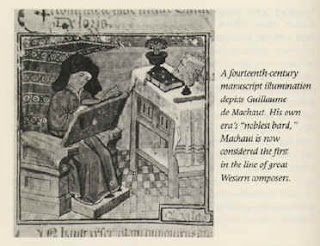Dieterich Buxtehude – Praeludium in E Major
Studying Dieterich Buxtehude’s Praeludium in E Major was an interesting ordeal because of my lack of interest in the organ. Though hard to admit, there is something about the way it sounds that just irks and scares me. My lack of understanding of organ music and how the organ is played could be the reason for my fear.
In addition to being a popular composer of organ music, Dieterich Buxtehude (ca.1637-1707) was known for his virtuosic playing as an organist. As a child, Buxtehude grew up being surrounded by the organ, as his father was an accomplished organist, and it is thought that Dieterich was taught by him. Dieterich Buxtehude began playing organ in a local German church, before he was granted the organist position of the St. Mary’s church in 1657; the same position held by his father, which he held for thirty-five years. Buxtehude was known not only for his playing, but also for his virtuosic writings of both the hands and the pedals of the organ.
Buxtehude’s Praeludium in E Major is an organ prelude in the style of a toccata, which is a virtuosic display at the keyboard and the pedals. “Filled with motion and climaxes, the toccatas display a great variety of figuration and take full advantage of the organ’s idiomatic qualities.”[1] An example of the organ’s idiomatic qualities is the extensive pedal work. This toccata style presents a series of alternating free and fugal sections, which display diversity in the piece, but he creates a sense of continuity from one section to the next by unifying the piece by staying in the key of E major.
The free sections in the Praeludium in E Major replicate an improvisatory feel due to the repeated and spontaneous changes in the rhythm, melodic direction, harmony, phrasing, and texture. An example of this can be seen in measure fifty-one, by changing the melody from being in the hands to being isolated in the pedal part, which defies than the figured bass that is normally found in the pedals of his contemporaries. In this measure the pedal part is isolated with a virtuosic line including a long trill, but within the next measure, the pedal part sustains a tone, while both hands rupture with a rapid passage of unpredictable changes in speed and direction. Praeludium in E Major contains five of these free sections. Four fugal sections follow each of these sections, which are notated by a change in meter or tempo. The fugue subject, as seen in measure thirteen, is imitated in all four voices. Buxtehude typically puts the entrances beginning in the soprano line, followed by the alto and tenor lines, and ending with the bass line. These series of entrances are known as the exposition. The second entrance, or the answer, follows the exposition usually altered to fit the key. The four voices constantly alternate between the subject and the answer. If the subject begins on the tonic, the answer will always begin on the dominant and vice-versa.
After listening to Praeludium in E Major for the first time, I had my usual reaction to organ music. After researching more about Buxtehude and his virtuosic performances and written compositions, I slowly began to appreciate more of what the organ had to offer. The technical aspects of this piece are amazing, and are truly exemplified in the pedal work. I was completely oblivious to what organists are capable of. This piece has opened up my perspective and helped me to appreciate the complexities of organ music.


